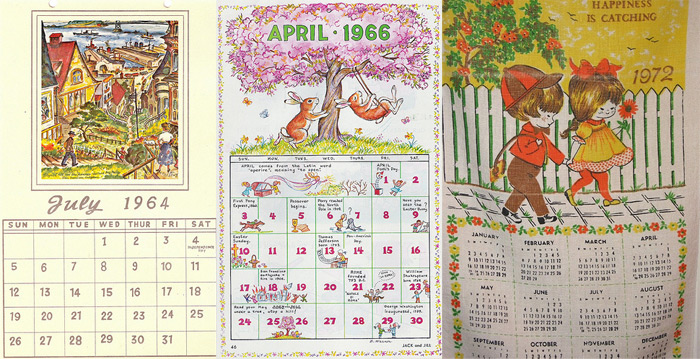Friday, July 3, 2009
This newsletter is sent around once a week and features news about how the internet & digital media are reshaping B2B publishing and media. If you know someone who may be interested in receiving this newsletter, have them sign up here.
Featured Story
10 Tips for Improving Your Blog
Twice this year, I have shared tips to becoming a better blogger: Today, I want to profile a thriving B2B blog and share some lessons from it.
The blog we are looking at is ShelfTalker, a blog on PublishersWeekly.com that is authored by booksellers who give an insider's view on the book industry, with a particular focus on children's books. Started by Alison Morris in 2007, the blog is now primarily run by Josie Leavitt and Elizabeth Bluemle, though Alison still pops in often! Let's find out more about these bloggers:
Elizabeth Bluemle: Co-owns The Flying Pig Bookstore in Shelburne, Vermont, is the author of three children's books, and is the incoming president of the Association of Booksellers for Children.
Josie Leavitt: Co-owns The Flying Pig Bookstore, is a stand-up comic and a humor columnist for the local paper.
Alison Morris: Is the children's book buyer for Wellesley Booksmith in Wellesley, MA. She is an active member of both the Association of Books for Children and the New England Children's Booksellers Advisory Council.
And their blog is just phenomenal. Here are some lessons from their blog that can easily be applied to others:
- A Good Blog Helps
The authors of ShelfTalker are experts - working in bookstores for years, as librarians or elsewhere in the publishing industry. They are writers, and they are most certainly readers. They deal with customers every day - the book-buying public - and experience the good and the bad of the publishing industry at the most nuanced level. They know about the trends first, because they see it happen one book sale at a time.
These three bloggers are generous in taking these real-world experiences and turning them into tips and stories that will benefit others in the book industry. Here are two examples of such articles: Self-Publishing Tips and Promotional Emails: Do's and Don'ts
- A Good Blog Entertains
ShelfTalker is filled with interesting tid-bits and funny facts that focus on the lighter side of the book industry. Here are some examples: Book inspired cat names; Books inspired food (a Where the Wild Things Are bento box, anyone?); or furniture that looks like it came out of a Dr. Seuss book.
- A Good Blog Let's You Inside
A primary role of this blog is to give booksellers, publishers and readers and insider's view of life in the bookstore. That can include the many stories that Elizabeth, Josie and Alison share about their customers, or details about things such as publishers' invoices or how story hour affects sales.
- A Good Blog Creates a Shared Experience
ShelfTalker gets reader comments on every post. The bloggers also get emails from other booksellers and blog readers who want to reach out more directly. They receive a ton of positive feedback when the go to industry events, learning how widely they are read, and how they are creating positive experiences in far corners of the industry. Here are a few examples of the comments they receive:
- 28 comments on a post about the age-appropriateness of certain books.
- 24 comments on a post about literal-minded books.
- 26 comments on a post about a new publishing-related TV show.
- A Good Blog Goes Beyond the Blog Itself
Look at this recent post by Alison: A Visit to The Center for Cartoon Studies. 1,600 words and 18 original photos. Incredible. Or this post by Elizabeth that shares the experience of having a kids tea party in their store. 650 words and 5 original photos. Or how about their coverage of the BookExpo America conference here, here, here, here, here, and here.
These are just a few examples of how these bloggers connect with their industry and colleagues in real-world settings, and then close the loop by sharing it all in the blog. Elizabeth, Josie and Alison eat and breathe books, and it is clear that every facet of their lives touches the same topics as the blog itself.
- A Good Blog Connects with Readers Often
The blog receives about 15-20+ updates each month, meaning that Elizabeth, Josie and Alison check in about 2-3 times per week. This frequency is essential to creating a strong bond with their readership. Each blogger has a ton of ideas, but finding time to create the blog entries is not always easy. Blogging is certainly resource intensive, but those efforts pay off.
- A Good Blog is Professional
These three bloggers all work within the book industry, and have invested their lives & careers in this topic. Their posts are professional and courteous - touching upon a range of topics from big picture items, to the tiniest of details. Clearly, they take on a great deal of responsibility to represent themselves and their businesses well to the world at large.
- A Good Blog is Personal
ShelfTalker is full of quirks, personality, and stories. These are real people sharing the ups and downs of their lives, and the ins and outs of their experiences in the book industry. I think that readers connect not only with the topic, but with particular bloggers.
- A Good Blog Cares
Here is a recent post where Josie shares a customer's relationship to her store through the birth of their son. Looking (with permission) at past book sales records from this family:
"You can track this boy's whole little life -- what he likes, what his parents hope for him, and how thoughtful his parents are with each other and their son."Here is another entry about the small town life of a bookstore owner:
"Shelburne's population is... just over 7,000 people, and some days it feels like I know them all. I've taken to carrying a small notebook with me wherever I go. Here's what happened yesterday just going about my day. On my way to work I stopped at Village Wine and Coffee across the street from the store. I go there every day. They have a drink named after me, The Josie; a double shot iced skim latte (an absolutely fabulous drink). If it's below 10 degrees I get a hot Josie, and the folks behind the counter *know* this.
So, I'm waiting for my drink and in succession three people come up to me. "Do you have the Updike poetry book?" "Yes" "Are you sure?" Well, I haven't actually had my coffee, but we had the Updike when I closed last night. Out comes the notebook. Updike for Sheldon. Someone else asks if new Percy Jackson is out yet and could I save one. I make another note: Olympians for Reg. Then Gail comes over and tells me she's decided to order that bird book for her nephew after all. She doesn't remember the title, but I do, I think. I make another note. I've been out and about less than five minutes and I've already taken three special orders.
- A Good Blog Endures and Grows
In the 2+ years of ShelfTalker, their page view metrics have been consistently growing. It's a beautiful upward curve when you graph it out. I think that even for niche B2B blogs, that you can always increase your audience size.
What is most interesting is a recent transition that occurred on the blog. Alison had been the sole author since launch, but earlier this year, handed over the reins to Elizabeth and Josie. Would readers follow Elizabeth and Josie as strongly as they followed Alison? Would Alison's experiences in the book world go from transparent to opaque?
The strength of the blog and community lead to good things. Alison has continued to share her experiences on the blog several times a month, and ShelfTalker readers have welcomed Elizabeth and Josie on board. A positive blog leads to positive experiences.I couldn't discuss ShelfTalker without mentioning the efforts and support of Diane Roback, Childrens Book Editor for Publishers Weekly. She is the primary mover in helping to create and support this blog, and is a great resource to Elizabeth, Josie and Alison.
Thanks so much to Diane, Alison, Elizabeth and Josie for creating such wonderful blog!
Top News Items of the Week
- Most Dead Newspapers Not Doing Well Online
A look at the progress of newspapers that have ended their print edition in order to focus online.
- Average Twitter user has 126 followers, and only 20% of users go via website
"Only 20% of its traffic comes through the Twitter website; the other 80% (logically) comes from third-party programs on smartphones or computers. So if you're looking at Twitter stats on your website, you're probably underestimating that source of traffic by a factor of five."
- Bit.ly's Grand Plans, And Their Inevitable Clash With Digg: Bitly Now
"Digg shows popular links based on what people vote on, filtered massively for fraud. The Digg home page is populated with the top stories voted on by Digg users. But only 20,000 or so new links a day are submitted to Digg (compare that to 2-3 million for Bit.ly). And Digg has to constantly fight users who try to game the system and get access to home page traffic. They also rely on users to categorize links and provide other metadata about the stories."
- Top 6 User Testing Mistakes and How to Avoid Them
How to understand what your customers really think about your products.
- Search is Generating the Bulk of B2B Leads - But How Good are They?
"The success of a marketing program is too often judged by the quantity, rather than the quality, of leads produced. But when it comes to converting leads to revenue, the sales force will tell you that more isn't necessarily better - better is better."
- In Iran, Journalism Makes Use of Unverified News
"It's incredible, the volume of stuff coming out" from Iran, said Matthew Weaver, who sounded exhausted Thursday evening after blogging for more than 10 days for The Guardian newspaper's Web site. When rallies and conflicts occur "first the tweets come, then the pictures, then the YouTube videos, then the wires," he said. "It's extraordinary." Most important, he said, what people are saying "at one point in the day is then confirmed by more conventional sources four or five hours later."
- The future of ad networks and display advertising
"As many analysts and industry insiders are quick to point out, although the rates of inventory may be decreasing and the market growth rate has stalled, it's not all doom and gloom. In fact, there is a sense of renaissance in the sector because innovation is blossoming."
- The Top 10 Twitter SEO Tips
"With all the rumors suggesting that Google will soon offer real-time search capabilities, indexing Tweets and other real-time web data, now is a good time to take a closer look at your Twitter presence. Even now, what you tweet can be held against you on the engines, although it can also work to your advantage."
- Keeping News of David Rohde's Kidnapping Off Wikipedia
"For seven months, The New York Times managed to keep out of the news the fact that one of its reporters, David Rohde, had been kidnapped by the Taliban. But that was pretty straightforward compared with keeping it off Wikipedia... Details of his capture cropped up time and again, however briefly, showing how difficult it is to keep anything off the Internet -- even a sentence or two about a person who is not especially famous."
- Facebook to Emulate Twitter's Follower Model With Profile Fans
"Could it be that you will soon be able to have followers, not just friends, on Facebook too? That definitely appears to be the case. Just take a look at your email notification settings for a little proof."
Just for Fun (LEGO Michael Jackson edition)
- LEGO Thriller
- LEGO Smooth Criminal
- LEGO Bad
- Meal of the week: Dinner with friends. An indian food feast consisting of chicken, lentils, squash, rice and more!

Make your own ice cream brownie sundae for dessert:

This is my friend's dog Dozer. He means well.

About this newsletter:
Questions? Comments? Visit www.DanBlank.com or contact Dan directly at dan@danblank.com or 973-981-8882.









